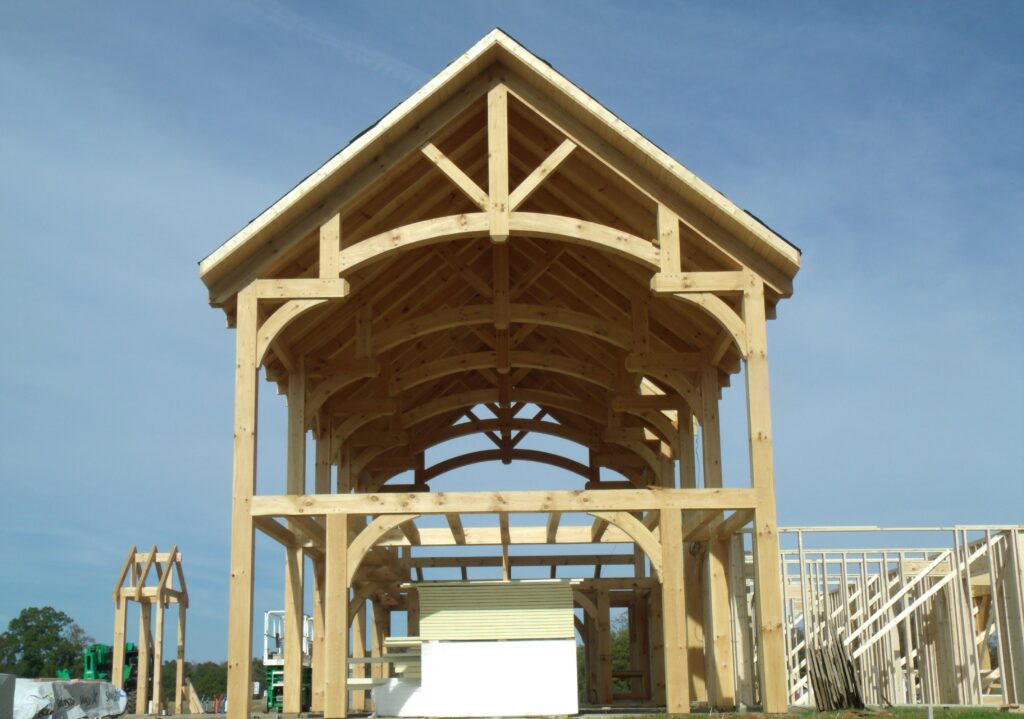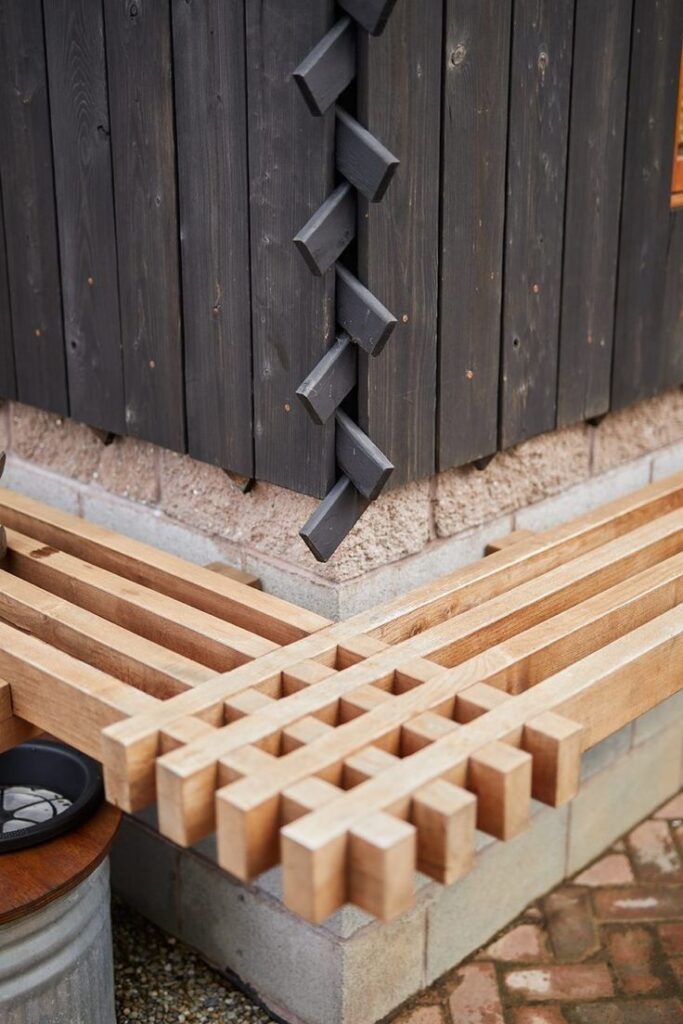More than just a garden structure, a wooden pergola is an invitation – a promise of dappled sunlight, climbing greenery, and a space suspended between shelter and sky. Yet, beneath its seemingly simple form lies a profound testament to craftsmanship. Building a truly exceptional wooden pergola transcends mere assembly; it is an intricate dance between the inherent beauty of wood and the skilled hand of the artisan, resulting in functional poetry for the outdoors.

The Foundation: Material as Muse
Craftsmanship begins long before the first cut is made. It starts with a deep respect for the material itself. Selecting the right wood is paramount, a decision guided by aesthetics, durability, and the pergola’s intended character:
- Understanding the Grain: The artisan sees not just planks, but stories told in grain patterns – the tight resilience of vertical grain cedar, the rich, swirling drama of redwood, the warm, familiar embrace of pressure-treated pine. Each species offers distinct hues, textures, and natural defenses against the elements.
- Sourcing with Integrity: True craftsmanship often involves sourcing wood responsibly, whether it’s locally harvested timber minimizing transport impact or certified sustainable exotic hardwoods. Knowing the wood’s origin is part of honoring it.
- Seasoning and Preparation: Properly kiln-dried or air-seasoned wood is crucial. This minimizes warping, twisting, and cracking later, ensuring structural integrity and longevity. The craftsman inspects each piece, rejecting those with excessive knots, checks, or weaknesses, ensuring only the finest material forms the bones of the structure.

The Art of Joinery: The Soul of the Structure
The heart of pergola craftsmanship lies in its joinery – the methods used to connect beams, rafters, and posts. This is where mere carpentry elevates to artistry:
- Traditional Techniques:
- Mortise and Tenon: The gold standard. A precisely carved tenon (tongue) on one beam fits snugly into a corresponding mortise (hole) in another. Often secured with wooden pegs (treenails), this joint transfers loads efficiently and is incredibly strong and durable, showcasing the maker’s precision. Seeing the exposed end of a tenon or a wooden peg is a hallmark of fine craftsmanship.
- Lap Joints: Where beams overlap, sections are carefully notched out so they interlock flush. Clean, tight laps, especially half-laps or cross-laps at intersecting beams, require meticulous measurement and cutting.
- Scarf Joints: Used to join two beams end-to-end seamlessly. Complex angled cuts fit together like a puzzle, often reinforced with plates or bolts internally, demanding exceptional accuracy for a smooth, strong connection.
- Precision is Paramount: Whether using hand tools – chisels, mallets, saws – or carefully calibrated power tools guided by a skilled hand, every cut must be exact. Gaps, misalignments, or forced fits are the enemies of both structural soundness and aesthetic appeal. The satisfying “click” of a perfectly fitted joint is the craftsman’s reward.
- Beyond Nails and Screws: While hardware has its place for reinforcement or specific designs, relying solely on nails or basic brackets often signifies expediency over true craftsmanship. The beauty lies in joints that derive their strength from their design and precise execution, minimizing visible metal.

Shaping Space and Shadow: Design Nuance
Craftsmanship extends to the thoughtful design execution:
- Proportion and Scale: A well-crafted pergola feels harmonious with its surroundings and the architecture it complements. The spacing of rafters, the overhang of beams, the height of posts – all are carefully calculated not just for stability, but for the quality of light and shadow it creates. Too dense, and it feels oppressive; too sparse, and it loses its sense of shelter.
- Detailing and Embellishment: This is where artistry truly shines. It might be the elegant chamfering (bevelling) of beam edges to soften lines and highlight the wood’s depth. It could be decorative corbels supporting crossbeams, subtly curved ends on rafters, or intricate latticework panels integrated into the sides. These details, executed cleanly and consistently, transform a structure into a signature piece.
- Integration with Nature: The craftsman designs with climbers in mind. Are there integrated trellis strips? Are rafter spacings ideal for wisteria tendrils or grapevines? The structure is conceived as a living framework, anticipating its future green mantle.

The Finishing Touch: Protection and Patina
Craftsmanship demands protecting the investment of skill and material:
- Meticulous Sanding: Every surface, especially end grain and joints, is sanded progressively smoother. This not only enhances the feel and appearance but ensures finishes penetrate evenly and adhere properly.
- Thoughtful Finishing: The choice of finish – penetrating oils that enhance grain, durable exterior varnishes, or subtle stains – is applied with care. Multiple thin coats, sanded between, create a protective barrier that repels water and UV damage while allowing the wood’s natural beauty to breathe. Attention is paid to sealing end grain thoroughly, the most vulnerable point for moisture ingress.
- Embracing Patina: The true craftsman understands that wood lives and changes. The chosen finish should allow the pergola to age gracefully, developing a silvery-grey patina (like cedar or redwood) or mellowing in hue, adding character over time rather than flaking or peeling prematurely.
The Intangible Essence: Why Craftsmanship Matters
In an age of mass production and prefabricated kits, why does the craftsmanship of a wooden pergola hold such value?
- Longevity and Durability: Precise joinery and proper material selection and finishing create a structure built to last decades, even generations, weathering storms and seasons with enduring grace. It’s an investment, not a disposable item.
- Unique Character: No two handcrafted pergolas are identical. The wood’s grain, the subtle variations in hand-cut joints, the chosen details – all imbue it with a unique personality and soul that a factory-made product cannot replicate.
- Connection to Tradition: It carries forward centuries-old woodworking traditions, a tangible link to the human skill of shaping nature into useful beauty. It represents patience, knowledge, and pride in work.
- Enhanced Experience: Knowing the care and skill embedded in its construction deepens the experience of using the space. It feels more substantial, more meaningful – a true sanctuary crafted with intention.
- Sustainability: A well-crafted pergola, using durable, responsibly sourced wood and built to last, is inherently more sustainable than replacing flimsy structures every few years.
Conclusion: A Testament in Timber
The wooden pergola, at its finest, is more than shade; it is a sculpture for living. Its craftsmanship whispers of the forest from which it came and the human hands that carefully selected, shaped, and joined its timbers. From the silent strength of a perfectly fitted mortise and tenon to the deliberate sweep of a chamfered edge, every detail speaks of an artisan’s dedication. It is a structure that shelters not just from the sun, but from the ephemeral, offering a timeless space where nature’s beauty and human ingenuity intertwine. To sit beneath a truly crafted wooden pergola is to appreciate a quiet masterpiece, a testament to the enduring power of skill, patience, and wood – a living architecture that grows more beautiful with time.


